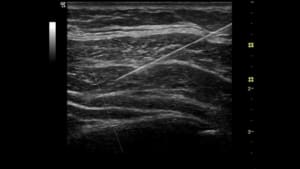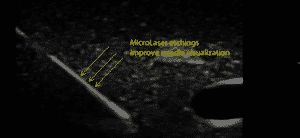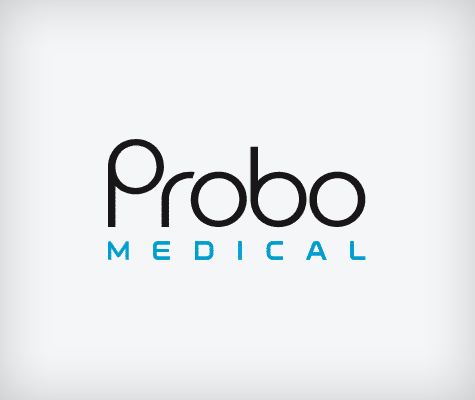The ultrasound market hit a tipping point about 5 years ago when three things met at a critical point: image quality, portability, and price point. Physicians had access to high quality, reasonably priced portable ultrasound machines, which meant that they could start using ultrasound as a tool in their practices, surgeries, and general office work. Since then, the portable/hand-carried market has exploded.

There are a few key considerations in purchasing an ultrasound for needle-guidance
One of the most common uses in this growing market is ultrasound-guided needle injections, particularly because of its effectiveness and because it’s reimbursable. We’re even seeing semi-retired doctors and small rural offices join the crowd by adding ultrasound to their practice.
The problem for these folks is that they’re typically not educated in buying or using ultrasound. Here they can learn some of the key considerations and important factors.
What type of ultrasound is appropriate for needle guidance?
Probably 95% of ultrasound-guided procedures are done with a portable ultrasound machine. This is a “point of care” application, so it’s often done at bedside and requires something lightweight and hand-carried. Most of these are color Doppler ultrasounds, although color is not required in most applications, it’s often a standard feature in the mid-range and up. So, the typical ultrasound purchase is a portable color Doppler system equipped with a linear probe that has a top-end frequency of 10 MHz or higher. For those needing something to image deeper tissue, such as the hip, a 2-5 MHz convex probe is usually purchased as well.
What technologies are important?
Specifically, Compound Imaging and Speckle Reduction Imaging are great for ultrasound-guided procedures. Tissue and structures are much easier to view, and you’ll want every advantage available. Additionally, some systems with compound imaging allow you to perform “beam steering.” Some companies give this a special name (iBeam, iNeedle, Advanced Visualization, etc), but it’s just a fancy name for the same thing. The issue with beam steering, however, is that most companies charge a premium for this option. If you can’t afford it, don’t sweat it. You can also buy echogenic needles that appear brighter on an ultrasound image (I address this below).

Needle Visualization "B-Steer" beam steering option on a GE Logiq e ultrasound
The point here is, two key imaging technologies like Speckle Reduction and Compound Imaging have found their way into a price range closer to $10,000. Just a couple years ago, you couldn’t find anything for less than $25,000. So, if you’re doing a lot of ultrasound-guided needle procedures, get a system with these two technologies if you can afford it. You’ll be more efficient and accurate, which gives you better return on investment.
What is Beam Steering?
In the article on Compound Imaging I showed how ultrasound beams are sent at different angles from the probe head. With “beam steering” technology, the ultrasound can steer the beam so that it reflects more perpendicular to the needle. When this happens, the visualization of the needle is improved dramatically, almost as though the needle lights up.
What frequency transducer is best for MSK?
Here’s a myth: you need above 12MHz for superficial imaging. Theoretically, a higher frequency transducer is better for superficial imaging. But some high frequency transducers have poor resolution and limited penetration while quite a few manufacturers’ 10 or 12MHz transducers provide better image quality than their higher-frequency counterparts. So when the ultrasound sales rep tells you a lower frequency transducer is actually the better probe, they’re not crazy.
Do the needles make a difference?
Yes, and we’re not just talking about the gauges. Many companies, such as Havel’s have a wide variety of “echogenic” needles that are laser-etched. These etchings improve needle visualization a great deal as the etches reflect the ultrasound beam and create bright echos on the screen. Using an echogenic needle can negate the need and expense of adding a beam-steering option to the ultrasound machine.

Havel's and other companies offer echogenic laser-etched needles for improving needle visualization without needing beam-steering or other special technologies
What is the best ultrasound for needle guidance?
There isn’t one. The “best” brand or “best” ultrasound is totally subjective and it really depends on each individual’s needs and budget. The systems all have their own pros and cons. SonoSite is the most unique system because of its simple user interface, durability, and no-nonsense approach. But there are definitely drawbacks to the simplicity and size. A good sales rep will be able to talk you through popular manufacturers and the advantages/disadvantages to each. You’ll find great options from every manufacturer, so find the best deal with the options you need.
About the Author
Brian Gill is Probo Medical’s Vice President of Marketing. He has more than 20 years of experience in the ultrasound industry. From sales to service to customer support, he has done everything from circuit board repair and on-site service to networking and PACS, to training clinicians on ultrasound equipment. Through the years, Brian has trained more than 500 clinicians on over 100 different ultrasound machines. Currently, Brian is known as the industry expert in evaluating ultrasounds and training users on all makes and models of ultrasound equipment, this includes consulting with manufacturers with equipment evaluations during all stages of product development.


